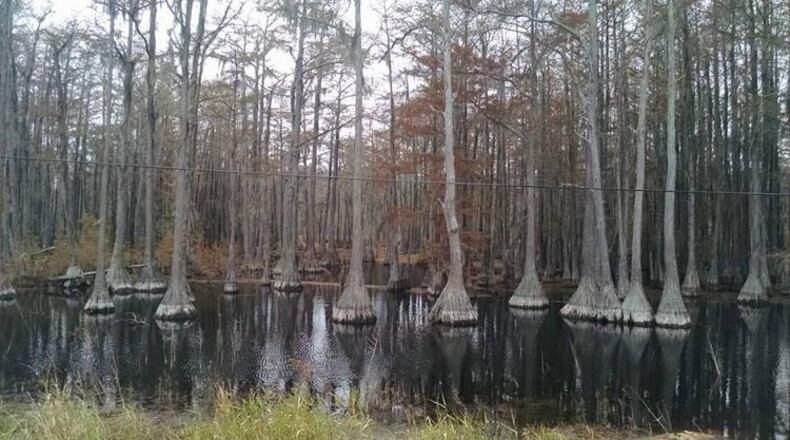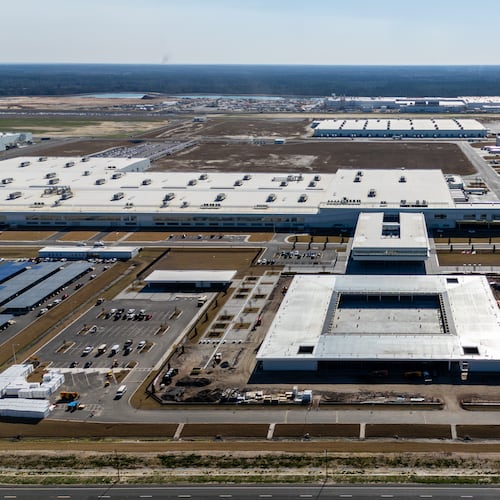The recent high water and flooding events in and along the Flint River and area creeks give us a reminder and unique opportunity to examine a few things. There are portions of the river and creek system that most rarely think about; or if they do, they frequently view them as a liability, not an asset.
Are you aware of how important our floodplains, river and creek swamps are, plus the wetlands not very close to creeks? These unique natural features provide many different, yet valuable, benefits to our environment, public health and the economy.
Some are parts of a creek’s or river’s floodplain, occasionally flooded. Others are “perched” away from rivers and creeks, often at some distance. Yet others are in the extreme headwaters of a creek system. All are critical habitat for some plants, animals and, in indirect ways, humans. They provide flood control by absorbing stormwater. They also provide filtration of excess pollution and sediment from stormwater and important recharge services for the aquifer that supplies our farms, creeks and rivers with water.
There are different types of wetlands, including riverine, spring fed and perched wetlands. They can be called swamps, bogs, sloughs or ponds, and are often filled with rainwater from overflow of area rivers and creeks. They may be stand-alone ponds or bogs filled by spring water or be filled directly by rainwater runoff from surrounding fields, woods or neighborhoods. They can be naturally occurring or man-made, like farm ponds. Whatever their source, all provide benefit to water quantity and quality.
Wetlands provide shelter and food for all sorts of wildlife. Wetland birds, including egrets, herons, wood ducks, kingfishers and occasionally wood storks, all nest and live in these environments. Almost all of our naturally occurring wetlands are dominated by towering bald cypress or pond cypress with numerous bushes and smaller vegetation below.
Reptiles like alligators, various turtles, frogs and snakes find a safe haven in these wetlands. Mammals such as river otters, white-tail deer and beavers also live in wetlands. And we cannot omit the large variety of fish, especially the smaller juveniles that find refuge in the shallower waters of the swamps.
A side benefit of swamps is recreation and tourism. While many people don’t view a swamp as a destination, nature lovers, botanists, herpetologists and bird watchers find these environments a valuable addition to any community. Hunters value wetlands as shelter for popular species such as ducks, wild turkey and whitetail deer. Fishermen may or may not know it, but riparian wetlands — those flanking creeks and rivers — provide key nursery habitat and in some situations actual spawning habitat for popular sport and food fishes.
Wetlands also can provide for pollution and excess sediment control. Wetlands help to clean and filter our drinking water prior to it seeping down into the aquifers. Wetlands trap pollutants like heavy metals in the soil, processing and even sequestering them. Other pollutants are broken down into less harmful substances.
Some wetland plants will actually absorb harmful materials, preventing them from reaching our drinking water. Wetlands also capture suspended solids, neutralize harmful bacteria and capture carbon and stash it away in sediments and plants, helping to moderate excess accumulation of carbon in the atmosphere.
One of the most often overlooked value of wetlands and swamps is floodwater collection. They can act like a huge sponge that helps to soak up water from heavy rains and flooding. Large swamps, or a collection of smaller ones, have huge capacity to absorb excess flood and stormwater. Some of these wetlands are perched, either decanting water via outlets to further downstream flowage, or slowly, very slowly, seeping water into the Floridan Aquifer, helping resupply the volume as it is depleted by our use.
Other perched wetlands have sediments that are so compacted due to their age that they pass very little water into the aquifer, yet they still provide important flood-control services and wildlife habitat.
During minor or major floods, wetlands such as the Swamp of Toa along Chickasawhatchee Creek, Big Slough on the Flint River above Bainbridge, Magnolia Swamp along the Flint River below Carsonville (that stretches all the way to Lake Blackshear) and the Eagle Pond swamps in Lee County are prime examples of these beneficial, natural places.
Floodplains and wetlands can receive and absorb large quantities of water. This was evidenced by the recent flood in mid-February this year, when Magnolia Swamp absorbed 6,000 cubic feet per second of the river water headed downstream to Lake Blackshear. This absorbed loss was 12% of the volume of water measured at the Carsonville gauge that, literally, had disappeared by the time the flood peak got to the Montezuma gauge. In terms of flood height, the swamp chopped off between 2 to 3 feet
While we can’t prevent flooding when unusually large rainfall events occur, we can often predict what might happen due to historical documentation, gauges on the rivers, creek and lakes, plus local observations that have been passed on from generation to generation. This helps us make short-term preparations and adjustments to protect life and property.
As part of our longer-term thinking, we can also protect wetlands, and even restore them, as well as protect other natural features that play highly important roles in mitigating these natural disasters, indeed, keeping some of them from unfolding in the first place.
Credit: Albany Herald
Credit: Albany Herald
MEET OUR PARTNER
Today’s story comes from our partner, The Albany Herald. The Albany Herald publishes daily in print and online at albanyherald.com, providing coverage of community news, events, and sports in Southwest Georgia.
If you have any feedback or questions about our partnerships, you can contact Senior Manager of Partnerships Nicole Williams via email at nicole.williams@ajc.com.
About the Author
The Latest
Featured




